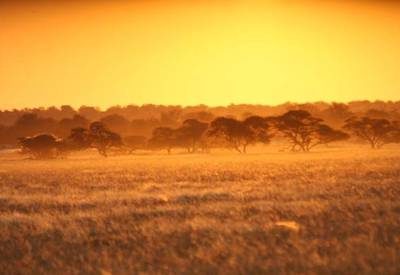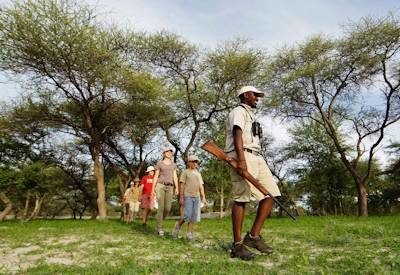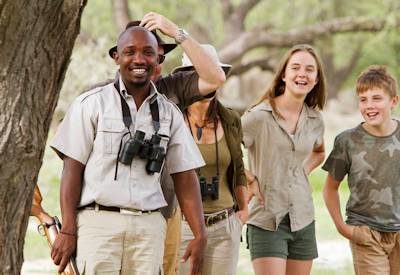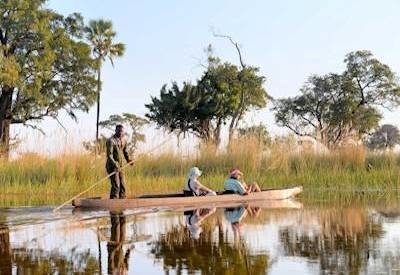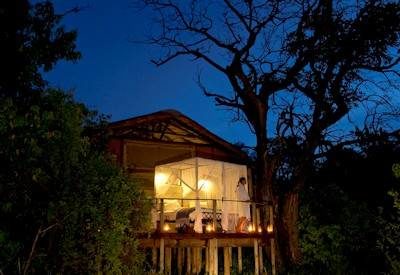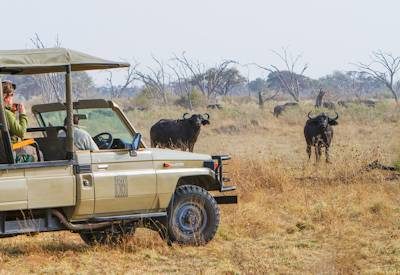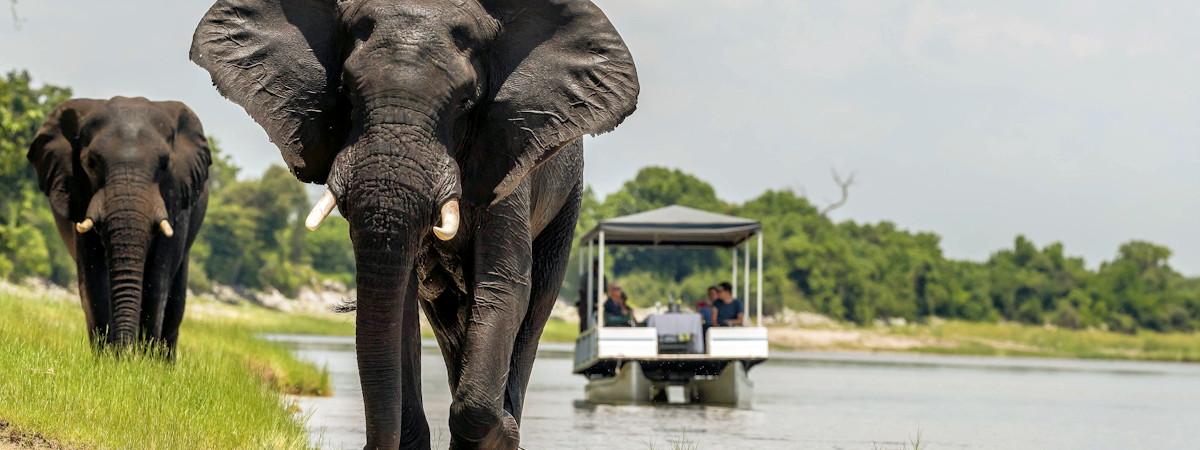
Chobe National Park
Experience And Photograph The Wildlife In Botswana's Chobe Park
A massive national park located in the north of Botswana offers visitors three world-famous wildlife destinations all located within the park, namely, the Chobe River, the Savuti Marsh and the Linyanti Swamps. These three very distinct regions offer an abundance of wildlife in a truly African setting.
The Chobe River is home to large numbers of elephants, hippos and other wildlife. The Savuti Marsh is well-known for its predators, while the Linyanti Marsh are a haven for birdlife. No matter what your interests are, Chobe National Park is sure to have something for everyone.
There are few destinations on the continent for safaris and wildlife photography that can match what the Chobe has to offer.
The Chobe National Park is located in the north of Botswana and is bordered by Namibia to the north and west, Zambia to the north-east and Zimbabwe and Botswana's Caprivi Strip to the east. The Chobe River flows along the northern boundary of the park and forms a natural boundary between Botswana and Namibia.
The park covers an area of 11,700 square kilometres and consists of floodplains, woodlands, wetlands and dry forests.
The Chobe National Park is home to one of the largest concentrations of African elephants in the world. It is estimated that there is an elephant population of over 120,000 individuals in the national park. Other wildlife includes lions, leopards, buffalo, zebra, antelope and many more.
An important safari aspect that is always forgotten is that Victoria Falls is a mere 80 kilometres away from the northern town of Kasane. Making it possible for the inclusion of Victoria Falls (Zambia or Zimbabwe) in any and all safari trip itineraries.
Combine with a safari to the Okavango Delta, Moremi Game Reserve, Central Kalahari Game Reserve and Victoria Falls for the best game viewing and game drives when in Botswana
Chobe National Park Facts
- Size: 11 700km²
- When to visit the park: Winter months are the preferred safari months
- Climate: Winter months are dry, and temperatures are hot to mild; summer months are wet with temperatures hot to very hot
- Rainfall: 600mm per annum varying
- Altitude: 930m - 1000m above sea level
- Location: northeastern Botswana, Chobe River forms the northern border
- Safari Lodge Accommodation: Lodges In The Chobe Park or Lodges In The Savute
Where is the Chobe National Park located?
Chobe National Park is located in the far northeastern region of Botswana, with the Chobe River forming its northern border with Namibia. The National Park covers an area of 11 700km², making it one of Africa's largest national parks. East and northeast of the Okavango Delta and Moremi Game Reserve while being north of Maun and directly west of Kasane. If that is starting to get confusing, have a look at the below map link.
To view the Chobe National Parks location on a Map, click here: Here Maps - Chobe National Park
Getting into the Chobe National Park is either by road-going safari vehicles or a light aircraft transfer from either Kasane airport or Maun airport.
Information On The Chobe National Park
Chobe is unique with its abundance of wildlife and true African nature, offering a safari experience of a lifetime. The Chobe National Park, which is the second-largest national park in Botswana, has one of the greatest concentrations of game found on the African continent.
The Chobe National Park is divided into four distinctly different ecosystems:
- Serondela (or Chobe River), with its lush plains and dense forests
- The Savuti Marsh in the west
- The Linyanti Swamps in the northwest
- And the hinterland, the area that lies between Savuti and the Linyanti
A wide variety of wildlife is found along the Chobe River, ranging from hippopotamus, crocodile, otter, elephants, buffalo, giraffe, zebra and of course, lion and leopard.
In all areas of the National Park, predators abound, including lion, cheetah, leopard and both brown and spotted hyena. The Savuti area has particularly strong populations of predators, and annual zebra migration provides excellent photographic opportunities.
Over 450 bird species have been documented in the National Park.
A wide selection of game lodge, boutique hotel and tented safari camp options is available in most regions of Chobe, including along the rive, in Kasane, the Savuti region and Linyanti reserve.
Best Time To Visit The Chobe National Park?
As always, the winter months are best for safaris in all areas of the Chobe National Park, as the daytime temperatures are mild to warm, and the wildlife and birdlife congregate around water holes and along the Chobe riverfront. However, it must be noted that the winter months are peak season, and one will see this reflected in the price of the safaris.
However, if one is willing to put up with hot temperatures and a thunderstorm or two, the summer months, especially along the river, are not too bad; one will still see good wildlife viewing with the bonus of exceptional birding. A safari to the Chobe in the summer months is also a bit cheaper when looking at costs.
With the summer rainfalls, the thick green bushveld makes it harder to spot wildlife which is a downside to a summer safari.
A boat trip or cruise of the Chobe River is available year-round and is not affected by seasons.
Main Attractions Of The Chobe National Park
- One of Africa's largest National Parks
- Four unique ecosystems: Chobe river, central pans around Nogatsaa, Linyanti wetlands and the Savuti region (Mababe Depression)
- Large elephant herds
- Exceptional wildlife encounters year-round
- Sunset boat cruises
- Photographic river cruise options
- Fantastic safari lodge and tented camps options throughout the park
- Savuti region
- Stunning scenery provides the backdrop to excellent game drive opportunities
- Suggested; at least 3 nights near Savuti and again three nights in the north of the park
The Chobe National Park is one of Africa's largest and most popular national parks, renowned for its exceptional wildlife encounters. The park is divided into four distinctly different ecosystems, each with its own unique array of wildlife.
Winter months are the best time to visit the park as temperatures are milder and animals congregate around waterholes and along the Chobe riverfront.
However, summer safaris in Botswana can also be rewarding, with the added bonus of cheaper prices.
No matter what time of year you visit, the Chobe National Park is sure to provide an unforgettable safari experience.

